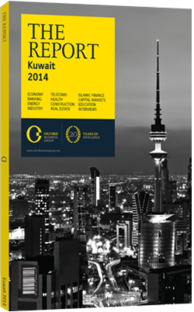Telcos are poised to introduce LTE-Advanced networks
Already a regional leader in 4G LTE development, Kuwait will soon see even more sophisticated service offerings as telecoms operators move to establish LTE-Advanced (LTE-A) networks. Offering twice the speed of existing LTE networks and superior connectivity, LTE-A is set to become a significant growth generator in Kuwait’s already-mature mobile market. With existing networks serving an increasingly data-hungry consumer base, the technology offers new methods through which to utilise existing broadband spectrums, offering companies a way to enhance offerings while maintaining revenues.
How It Works
LTE networks are defined by the International Telecommunications Union as any broadband service capable of supporting data rates of at least 1 Gbps. LTE-A is a newer technology using the same baseline, but it combines multiple spectrums onto one network; where LTE can only use one spectrum at a time, LTE-A can use multiple spectrums and aggregate them as one. In this way, LTE-A expands and enhances standard LTE platforms, allowing operators to provide better mobile services, high-performance applications and multimedia services on their networks.
LTE-A is forecast to become the future of the country’s mainstream wireless communications, following an initial roll-out of LTE services throughout Kuwait in 2013. However, there is a lack of antenna and chipset support for LTE-A at the moment, and as such, LTE-A is being used in the enterprise segment only. Moving quickly towards a commercial roll-out will be critical in meeting the skyrocketing data demand.
Partnership
Kuwait’s three major operators have already moved to introduce LTE-A services, starting with the Kuwait Telecommunications Company (VIVA), which announced plans to upgrade its 4G network in October 2013. The core network already supports LTEA, and VIVA began end-user trials on its access network after launching LTE services in March 2013. A commercial start date for LTE-A has not yet been announced, but VIVA’s partnership with telecoms manufacturer Huawei is expected to see consumer offerings expand.
Huawei has played an important role in establishing Kuwait’s LTE-A network. In 2012 Zain collaborated with Huawei to launch a commercial LTE network that delivers nationwide mobile coverage, and is to date the only LTE network that covers the country entirely. At the same time, Zain partnered with Huawei to offer LTE-enabled smart devices including smartphones, routers and dongles. In 2013 Zain and Huawei also formalised an agreement to create a joint innovation centre, which will focus on LTE-based business solutions. In August 2013 the pair announced plans to build an integrated all-mobile backbone network, supporting Zain’s LTE-A upgrade and offering future leasing opportunities.
Double Time
Zain’s planned LTE network will eventually deliver speeds of up to 300 Mbps, double the speed of the existing LTE mobile networks. To do so, the two companies will activate over 100 LTE-A cell sites during the project’s first phase, with commercial services coming on-line after sites become operational.
Huawei has already deployed core technologies for LTE-A platforms, including carrier aggregation, which allows for full utilisation of spectrum resources scattered across multiple frequency bands. This is vital to meet demand, according to Zain’s CEO Omar Al Omar. “Even with all the modernisation happening, all the upgrades, we still could not meet the demand... There is no upgrade unless you get more frequency, spectrum. So, LTE-A gave us that room,” he said.
Ooredoo followed Zain’s announcement in late November 2013, when Abdulaziz Fakhroo, Ooredoo’s CEO, told local media that the company had completed a $400m infrastructure project which will allow for a network upgrade to LTE-A technology. The new network will be deployed as soon as the necessary licences are obtained – a process which could include making spectrums available to operators.
Industry participants have commented that while data demand is increasing, revenues are not keeping pace. Delivering more capacity at a lower cost is a challenging target, and LTE-A is a step in that direction.
You have reached the limit of premium articles you can view for free.
Choose from the options below to purchase print or digital editions of our Reports. You can also purchase a website subscription giving you unlimited access to all of our Reports online for 12 months.
If you have already purchased this Report or have a website subscription, please login to continue.

